* (Halloween countdown post #3)

‘Jesús “Jess” Franco (1930-2013) was a Spanish film director, writer, cinematographer and actor. Franco, the underrated genius of exploitative 70s Horror movie-making has become a legend for Grindhouse fans in the last few years. With his unique style of combining beautifully directed and artistically styled Horror with extraordinary and funky music and a noble art of showing erotica he’s got a large fanbase from Europe to America.
‘He studied at the Real Conservatorio de Madrid, focusing on harmony and piano and also earned a Bachelor’s degree in Law and wrote some small novels under the pseudonym David Khume (the pseudonyms became one of Franco’s trademarks). In Paris he studied directing techniques at the University of Sorbonne. The thing he liked the most was living in seclusion and watching movies from the University’s archives all day and night. After becoming a film expert he started to make the first steps into the business doing cinematography and composing music for directors like Luis Saslavsky and Fernando Soler. Franco then directed short-documentaries like El Árbol de Espana (1957). His first feature film was called Tenemos 18 Anos (1959). This was a low-budget production, but Franco loved to be creative and work with his mind and even though he didn’t have a lot of money he shot films really fast so that he could release several in the same year.
‘Franco’s first Horror film was called Gritos en la noche (1962) and starred Howard Vernon as the legendary “Dr. Orloff”. Franco’s first film success was The Blood of Fu Manchu (1968), starring the legendary icon of Horror movies Christopher Lee. After a few more sexploitation movies like Die Sieben Maenner der Sumuru (1969) and El Caso de las dos bellezas (1969), he directed the Fu Manchu sequel Die Folterkammer des Dr. Fu Manchu (1969), again starring the brilliant Christopher Lee in one of his cult classic roles. With the German master actor Klaus Kinski, Fred Williams, and again, Christopher Lee, Franco made El Conde Drácula (1970), it was his version of Bram Stoker’s vampire story. It contained a lot of humor and his own brilliant ideas.
‘In the recent campaigns to fully restore Franco’s films to their original versions, many have been released in The States in the way they were meant to be seen for the first time, showing what his fans have always noted and what his detractors have missed. Gritos en la noche has been issued as The Awful Dr. Orloff, an early great that played well in it’s theatrical run, already showing a promise at an early stage. Another early film that should be seen is Miss Muerte, also known as The Diabolical Dr. Z a solid film that blends one of his favorite themes The Mad Scientist, with a touch of eroticism that would only hint to what he would be famous for, while the 1962 film The Sadistic Baron Von Klaus, is another film he would be known for as one of his best thanks to the DVD. Other Early to Mid 60’s films of note are Attack of the Robots, which was sold to American TV through AIP, and Lucky, the Inscrutable from 1967.
‘Franco’s films could be placed into specific eras that are connected to various studios and producers, with his early films connected to the French company Eurocine, which he would work for for the majority of his film career. In 1967, he started to make films for Aquila Film Enterprises, the first being the film that would break him out worldwide, Necronomicon better known to the world as Succubus, a very dreamy and sensual film which was a cult hit immediately that was released in 1969 in The States through Trans-American, connected to the mighty AIP. Sadly, his two other films for the Aquila were the light romps that were the Red Lips films made in quick time with some of the cast members of his best film for them including star Janine Reynaud, and while Sadisterotica, or Two Undercover Angels, and Kiss Me, Monster are enjoyable, they did not follow up to the interesting scenes that made Succubus the film that made the world take notice of him.
‘1968 Franco began working with Harry Allen Towers – The British Exploitation Producer that took Franco on travels that would produce two Fu Manchu films with Christopher Lee and then some of the most influential work of his career. Hired on to make The Blood of Fu Manchu as a quickie film to follow Towers’ three other films in the series, it looked like that Franco at least had a good time filming in Rio while meeting one of the most legendary actors of all time. Franco and Towers worked great all the way to 1970, although not without their problems.
‘The speed at which Franco made his films was already at their legendary level, proven by the three films he made almost back to back with Aquila around 1967 (Though the release of the Red Lips films was a little later, around 1969), but by the time he worked on The Blood of Fu Manchu, he already was starting on another film starring Shirley Eaton and George Sanders that was to be The Girl From Rio, using the annual festivities there are a backdrop for some of the more colorful scenes in the campy but cool Action-Adventure film with a touch of the sensual. This was another follow-up film to another Towers film, this time The 1,000 Eyes of Sumuru.
‘By the time production wrapped up for The Girl From Rio, extra footage of the Rio festival was made for a later day as well as some footage for was to be an influential Women In Prison film which was completed after a deal was quickly set. 99 Women was the film that really introduced Franco to the American audience, and with great performances by Mercedes McCambridge, Herbert Lom, and Maria Schell, along with Maria Rohm who appeared in many of Towers’ films at this time, it became a WIP film that broke new ground for the long-standing Exploitation genre. By 1969, Franco was a name to watch…at least for the film industry…as it turned into a huge Drive-In hit that shocked and won over audiences. Although this was a censored release, later on there would be a version with X-Rated scenes added in that were not by Towers or Franco, adding onto the many versions of his films released through the 60’s and 70’s that for a while confused many who wanted to look into his work.
‘In the rush to make a film from the work of a very controversial author came along the idea to try and make a film adaptation of a novel by The Marquis de Sade that wound up as Justine. Although it was logical that for an Exploitation film for a worldwide release, very little of de Sade’s sadistic epic novel was used, but the basic storyline was adapted for a Costume Drama that went more into the sensual than previous Franco films. Starring Jack Palance and Klaus Kinski, the film had some interference by one of the studios backing the film, AIP, who insisted that Romina Power should play the title role, and the results were a little less satisfactory than expected, but still coming out as a good Exploitation epic, although oddly enough, AIP in The States would hold back the release of the film until 1972 with a very edited version titled Deadly Sanctuary.
‘In Late 1968, possibly after wrapping up on the film that was the final Franco-Christopher Lee Fu Manchu film, The Castle of Fu Manchu, Franco met with a couple of members of a high-standing Pop band from England called Manfred Mann (“Do Wah Diddy Diddy” “Pretty Flamingo”) in the interest in creating a soundtrack as well as appearing in the film. The meeting was successful enough to be a start of the production of what was Franco’s most impressive film to date, Venus in Furs. Although AIP once again interfered with the story, as well as insisting that the film be titled after a novel that had nothing to do with the film, it still kept it’s Jazzy and surreal story about a woman abused and murdered at a party returning as a ghost and seeking revenge on those who were with her that fateful night. It may have been all a dream, and maybe it was the musician’s dream…let’s just say it’s a Sexy Jazzadelic tale to just get lost in. The decision to cast James Darren in the lead was a lucky shot as he could play trumpet – a very important requirement to play the role successfully – and another surprise to some was that Manfred Mann, the musician, and Mike Hugg, the Bassist from Mann’s band, were into Jazz and were could play it with skill for their moments on screen, and their performances, as well as that of Barbara McNair who has a couple of singing performances (The title song is great!), Rohm, and the small but notable roles for Dennis Price and Klaus Kinski, all added up to what is a great moment in 1969’s year in film.
‘After these films were released, Franco started to gain a group of die-hard-fans who loved his style of moviemaking. His films were always artistic, wonderfully shot and ambitious genre classics. But the best films of Franco’s work were still to come. After his success in the 1960s, the 1970s were Franco’s big time to shine.
‘In 1969, he formed his own independent company to make films that were more Adult and experimental without aiming for the commercial release, Prodif. Starting with Nightmares Come at Night, he would also experience some trouble of releasing films himself as it would take a couple of years for the film to see any kind of release, although Sex Charade (1970) and most importantly A Virgin Among the Living Dead (1971) would find a release quickly, with the latter being called one of his most important films. Teaming up with Christopher Lee once again in 1969, thanks to Towers being able to persuade him to take the part, he would wind up in the classic Sex Trip of Eugenie De Sade as the Narrator filmed apart from the sexual scenes as a kind of “Special Guest.”. Lee would be more of the star in two solid Franco films, one being an epic standout film The Bloody Judge, in the style of Witchfinder General with Vincent Price, with the legendary actor playing Judge Jeffreys in a great performance and added Exploitation value thanks to some punishment scenes featuring Howard Vernon being over the top (With this trend in mind, one should also note of another great Witchfinder-styled Exploitation film called Mark of the Witch, Produced by Adrian Hoven, who produced Franco’s Aquila films back in 1967).
‘1970 saw the release of what was to be Franco’s final film Produced by Towers, Count Dracula, featuring Lee as the Count in the way as he was meant to be played, away from any modernization that Hammer tried to surround the legend with at the time. Although it is a strong favorite with fans, it was a flawed production due to the budget which really had an effect on the special effects that were showing their cost by the end of the film. Despite all the words of Franco’s critics, though, the film actually has some of the most attractive photography in a Franco film next to The Bloody Judge, Venus in Furs, and A Virgin Among the Living Dead, and it should be said that the film solidified the friendship between Franco and Lee once and for all while they tried to create a film more based on the book. In an era where there were many variations on the theme, it has to be stated that the story had to get back to the basics in film by the Late 60’s, making this a relief for fans of the Dracula legend, some who rate it very high. The film also had a very interesting cameo by one of the most famous of Franco’s muses, Soledad Miranda, who would also be a part of Nightmares, but would move onto bigger roles soon.
‘The 1970s started with the great cult exploitation flick La Isla de la muerte (1970), starring the beautiful Marie Liljedahl as Eugenie, a sexy woman who gets in a lot of perverse situations. And a few months later, Franco released his next “Eugenie” film only called Eugenie (1970). It starred Franco’s favorite actress Soledad Miranda, one of the most beautiful and ambitious actresses of exploitation cinema. After a few more projects with Miranda like Les Cauchemars naissent la nuit (1970) and Der Teufel kam aus Akasava (1971), Franco directed his (in my opinion) best and absolutely greatest film ever: Las Vampiras (1970) aka Vampyros Lesbos. This great mixture of astonishing and breathtaking camerawork, great sleazy Horror suspense, sexy erotic scenes and a brilliant soundtrack is one of Franco’s most popular movies. It was starring his muse Soledad Miranda again and, in another role, the blonde Ewa Stroemberg. Franco gave himself a role too, he is co-starred as Memmet, a little bastard who likes to capture women and keep them in his cellar. After that, he made his last film with Soledad Miranda called She Killed in Ecstasy (1971). Tragically, Soledad died in a car accident.
‘Starting in 1970, Franco made a decision to team up with Artur Brauner, and with his Production, he made a series of films which included the classic trio of film starring Miranda. There has been some discussion on who was the best Franco Muse of The 70’s between Miranda and Lina Romay, but even if those who side with Miranda only have a small amount of films that display her presence, those films have been sighted by fans to be among the best of Franco’s Post-Towers work (The soundtrack to Vampyros Lesbos is a cult classic that is marked for being proof of Franco’s excellent choice of music to go along with the sexy happenings). This was the period which really started Franco’s hyper-production making the Towers period look somewhat tame by comparison. They included the many different versions and titles along with the many different AKAs he used that caused endless debate among film fans leading to a number of films rumored to have had Franco in the Director’s seat. While there were many different names used through his career, a good number of the long line of these names used date back to The 70’s.
‘By 1972, Franco was also working with Robert De Nestle for a series of films that was to feature more sexuality including Sinner, Lorna the Exorcist, and Les Emmerdeuses. Other films from the Early 70’s feature quite a diverse line of films including the Dramatic Devil’s Island Lovers, a well-received prison drama that showed what Franco can make even without the famed erotica of the era; some throwbacks to the classic monster movies including Dracula, Prisoner of Frankenstein; an atmospheric thriller in Night of the Assassins; a more Erotic return to the Witchfinder genre in The Demons, a films with a slightly funky Bongo and Wah-Wah guitar filled soundtrack that was one of the very few Post-Towers films to have a theatrical run in The States; and some Erotica featuring Lina Romay, who became the most notable of ladies thanks to her performance in Female Vampire, one of his most notable films for Eurocine (and one that was made famous on video years after it’s release in The States through it’s edited version called Erotokill), for whom he worked for on many films including what was to be another fan favorite, Exorcism.
‘By the time of Exorcism, which might be called a mix of Gothic and Erotica including a fine S/M opening performance with Romay as the “Victim” that was filmed in both skinful and clothed versions, Franco’s films really started to go into the era in which many different versions were made for different markets, causing no end to the confusion as to what the viewer has seen. Exorcism was to be one of the more extreme of cases where it was made with Hardcore scene for a version called Sexorcism, and also one watered down and released in The States on video as Demoniac. Many of Franco’s critics date from this era, viewing what was to be later known as heavily cut versions including AIP’s release of The Bloody Judge as Night of the Blood Monster from 1972, but in Exorcism’s case, Franco made a remix of that film called The Sadist of Notre Dame featuring more of his murderous character which was said to have been the version used for the highly criticized Demoniac release.
‘In the Mid to Late 70’s included his well-known works, including some of his best known WIP films, that were made for Producer Erwin C. Dietrich, including the sleaze classic Greta, the Torturer, which shortly turned into Wanda, the Wicked Warden, and then more famously thanks to the presence of star Dyanne Thorne, Ilsa: The Wicked Warden, the unofficial-now-official third Ilsa film. These were possibly Franco at his most extreme, and with films like Love Letters of a Portuguese Nun and Barbed Wire Dolls, this period of Franco’s work has many fans forming sharp opinions, with many Exploitation fans raving about them while those who side with his 60’s work offering some criticism with a version of Jack the Ripper starring Klaus Kinski being the most comparatively sedate of an otherwise wild era also defined by Women in Cell Block 9. Still, no matter what side one was on, it is to be agreed that these films still had very unique and bold scenes that remain some of the most talked about moments in Late 70’s Exploitation.
‘By The 80’s, Franco mainly kept base at Eurocine, although he still worked for other studios from time to time. Through The 70’s very few of his films made it to The States, but by The 80’s, with a decrease in Grindhouse theaters and Distribution companies that would promote his films, the main outlet for his film was through the growing video industry, although there would be theatrical playdates around the world. Although he kept the erotica alive through a number of films, Franco also went back into general Exploitation, including some attempts at the Cannibal genre (Cannibals, Sexo Cannibal), and other films like Oasis Of The Zombies, and a slight return to the WIP film in Sadomania, seen by many Franco fans as another extreme highlight.
‘The Late 80’s saw a slight return working with Christopher Lee in films that were more Action Adventure in nature including Dark Mission, a major change of pace from what he was making through The 70’s and 80’s. 1988’s Faceless was seen by many as a return to form, but by The 90’s, Franco was seen less productive with many films that had only a small release. By 1996, Franco returned to film making with Killer Barbys, and then went into the world of Direct to Video productions through One Shot Productions including Vampire Blues. Along with the last-known One Shot video production, Snakewoman, the last Franco videos known were from 1995, The Flowers of Passion and The Flowers of Perversion, both with a small release although still with their fans.
‘Franco’s history has many fans who still investigate a huge and diverse body of work and many critics who usually cry out the usual “Why do they like him?” complaints. No matter what side the film fan is in when it comes to Franco, it is without a doubt that several of his films are among the most influential or at least ground-breaking in Exploitation history. Although it can be said that there are way too many films for one to say “I have seen them all,” the best of his work has been well-received and respected by those who are willing to cast aside the criticisms and find out for themselves why he is a legend.’ — Tayvis Dunnahoe
____
Stills


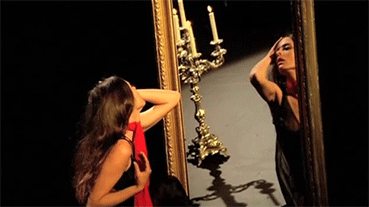




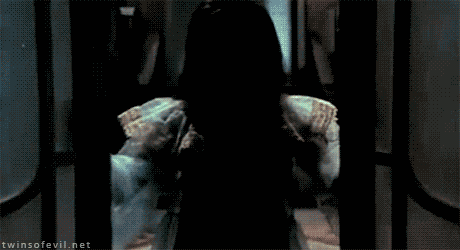




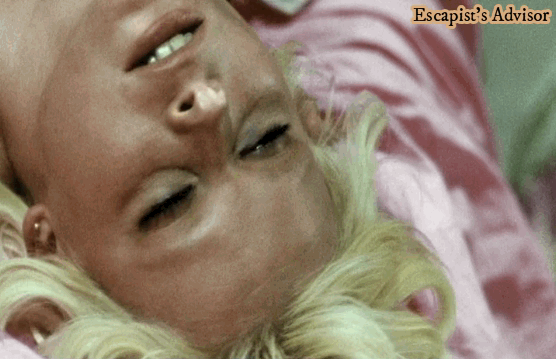

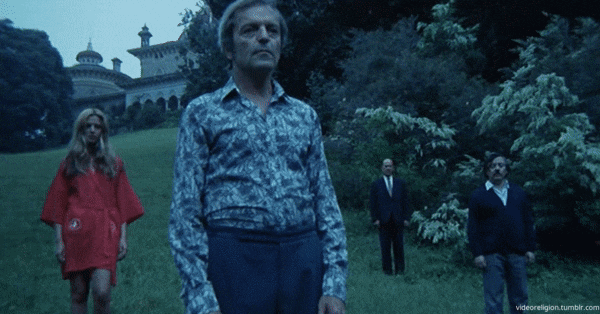
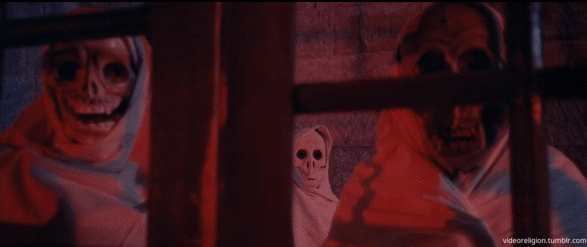

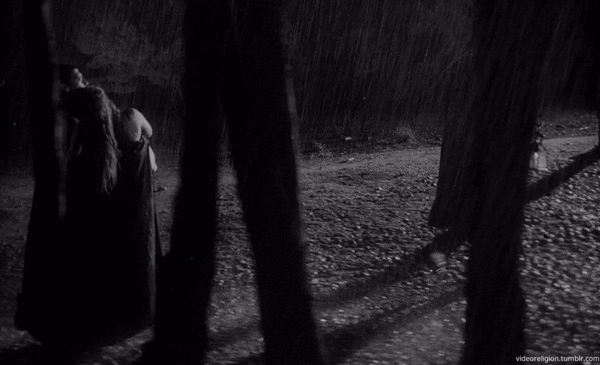
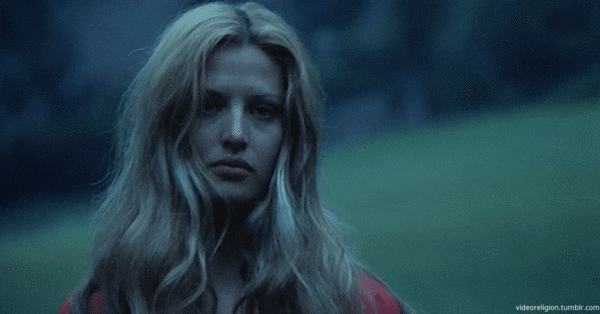
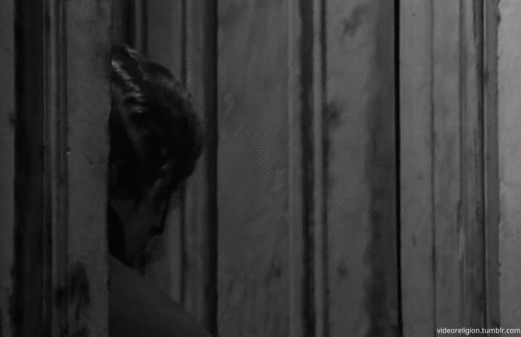

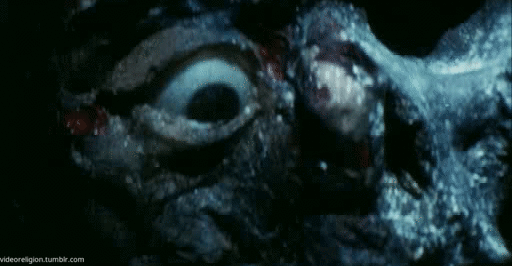
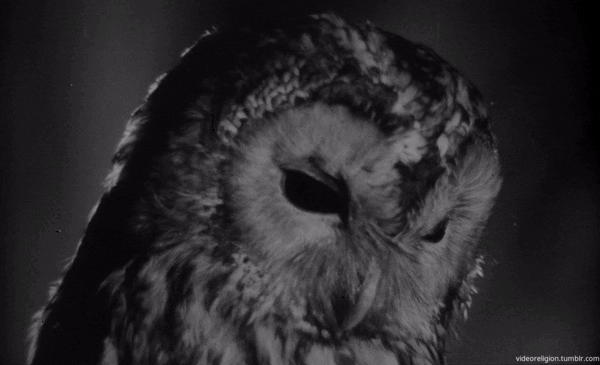


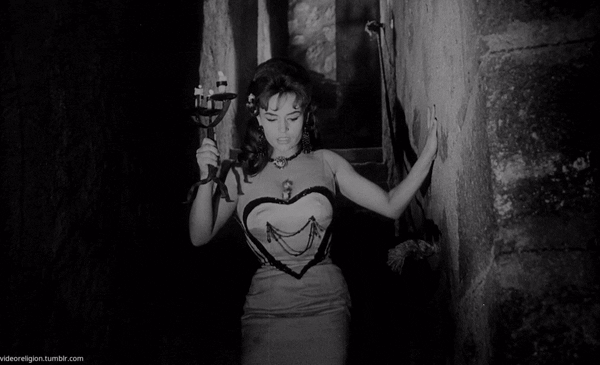
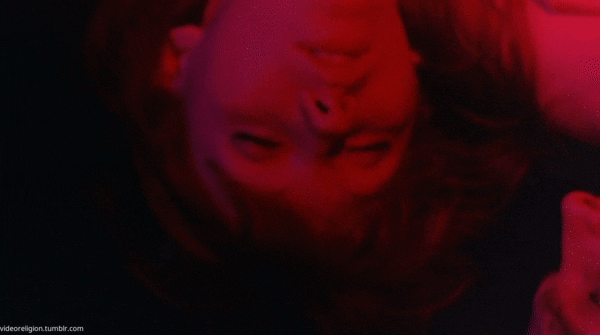
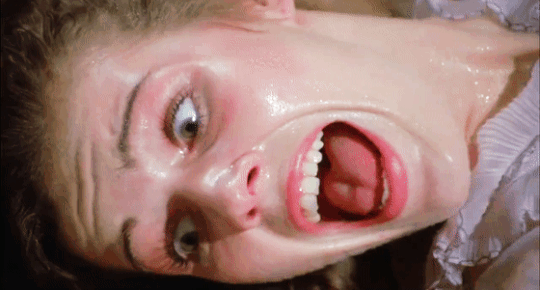

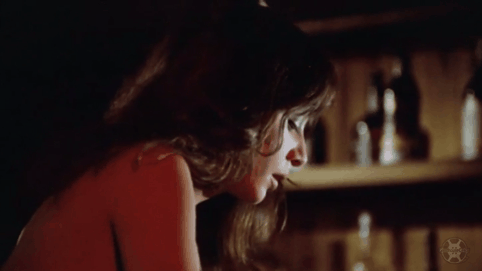

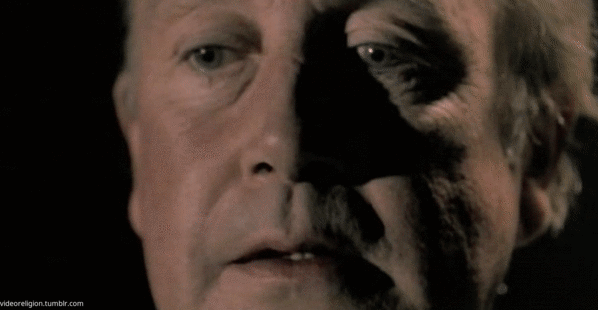
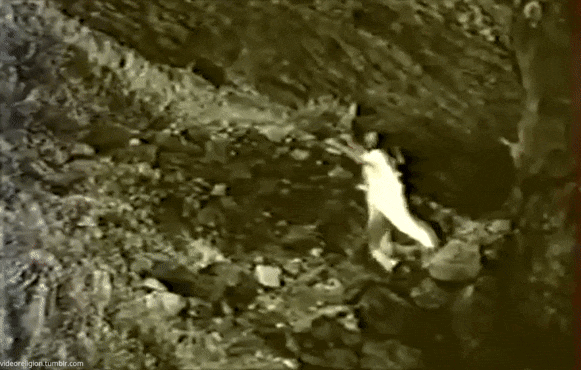
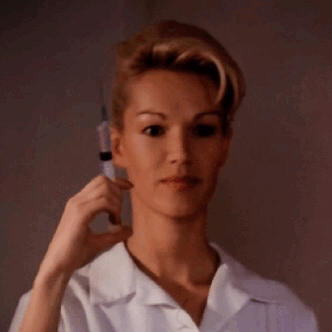

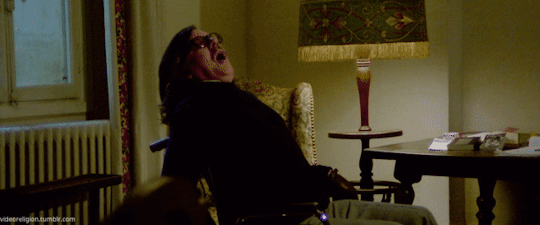
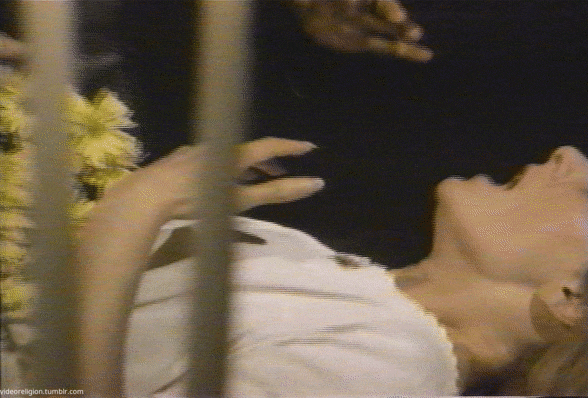
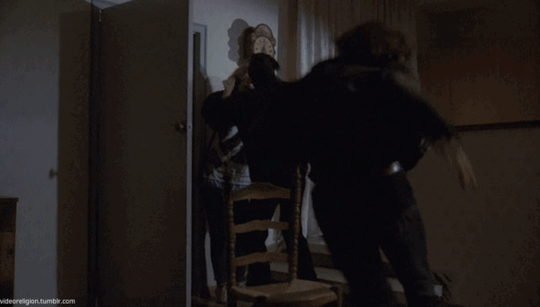
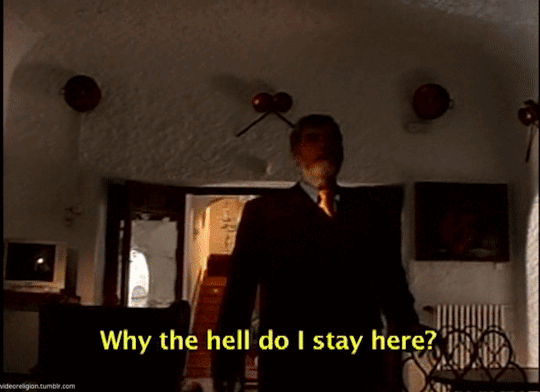
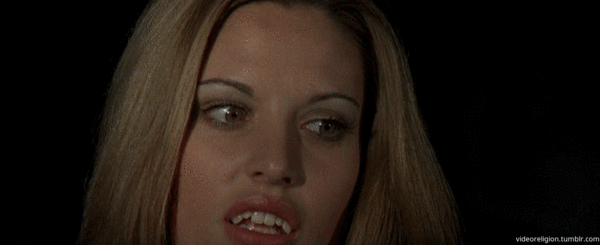

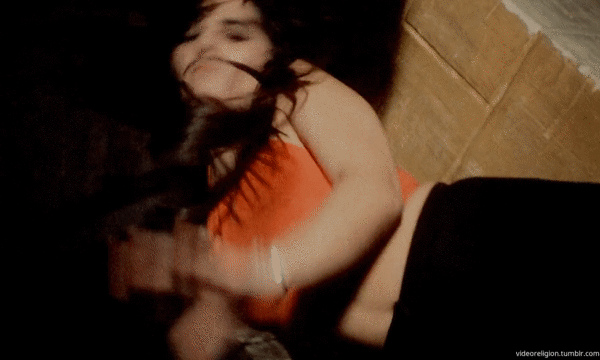


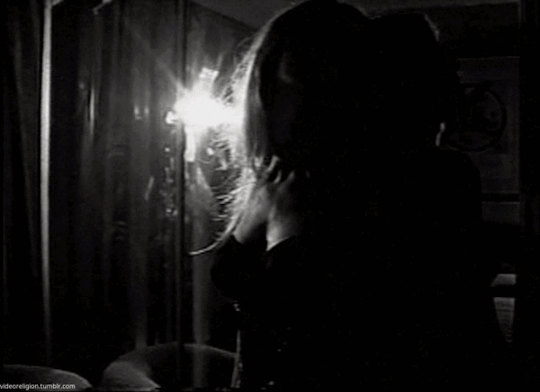
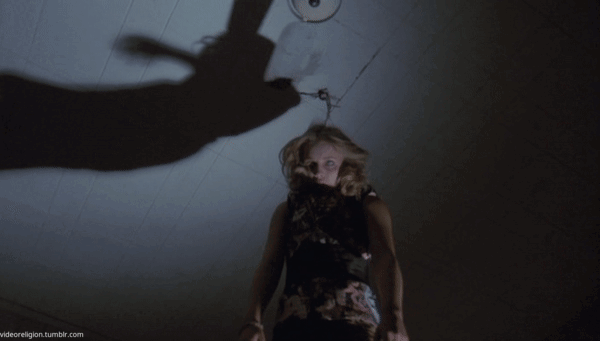
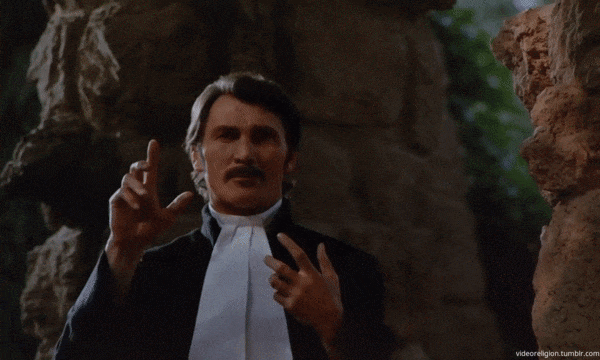


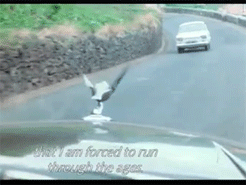
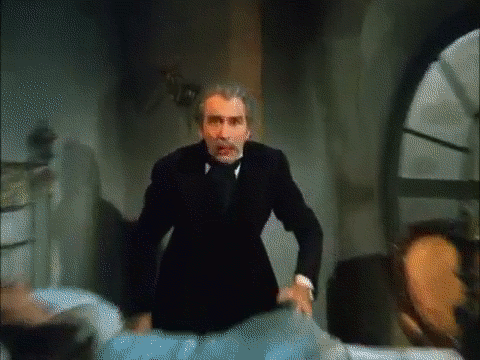

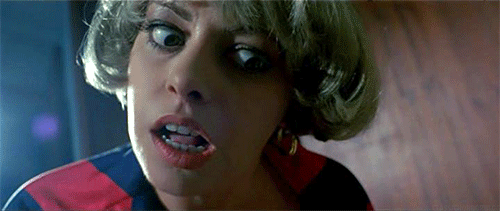

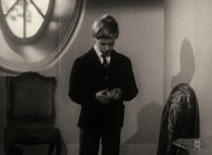
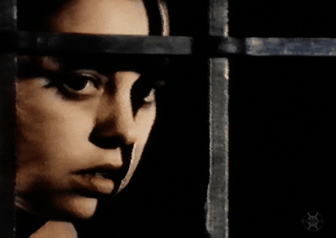

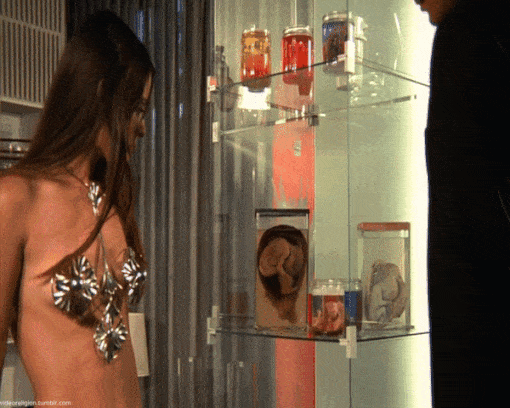
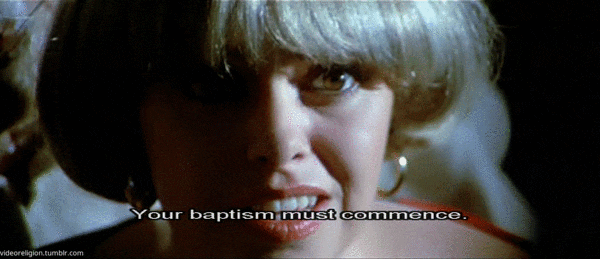
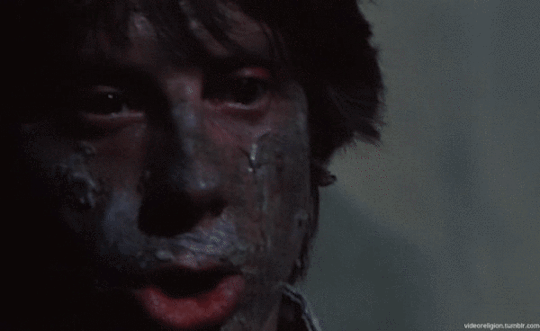
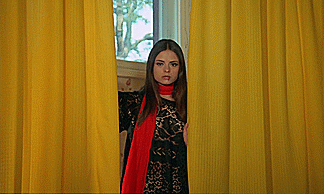

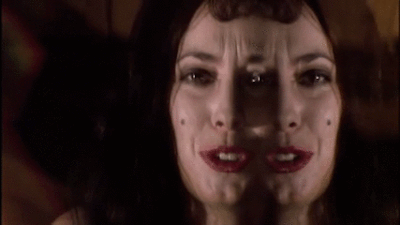

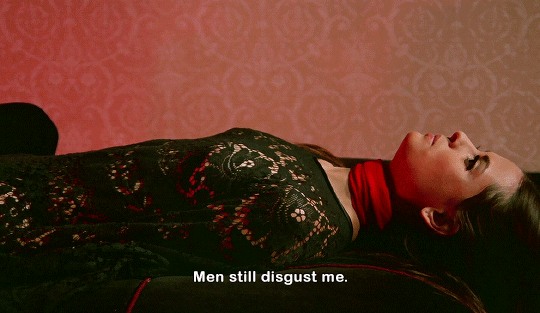
____
Further
Jess Franco @ artus films
Jess Franco @ IMDb
Jesús Franco: creator of erotic horrors who had a unique cinematic vision
SKETCHES OF JESS: JESS FRANCO’S DIRECTIONS IN B-FILM JAZZ
The Frontiers of Genre and Trance: Five Films by Jess Franco
The Jess Franco Collection
Jess Franco, Exploitation King, Remembered
Book: ‘The Films of Jess Franco’
Jess Franco @ Letterboxd
FRANCOPHILIA: WHERE TO START WITH THE FILMS OF JESS FRANCO
Top 10 Reasons Why Jess Franco is the Craziest Filmmaker
“WE’VE WARNED YOU ABOUT THIS MAN” – JESS FRANCO AND THE BBFC
Jess Franco, No Apologies!
The dA-Zed guide to Jesús Franco
___
Extras
The Bizarre World of Jess Franco
Jess Franco à la Cinémathèque française
JESS FRANCO + LINA ROMAY + Chicago + 2000
jess franco + interview
Bloody Moon – Jess Franco Interview
_____
Interview
from Franconomicon
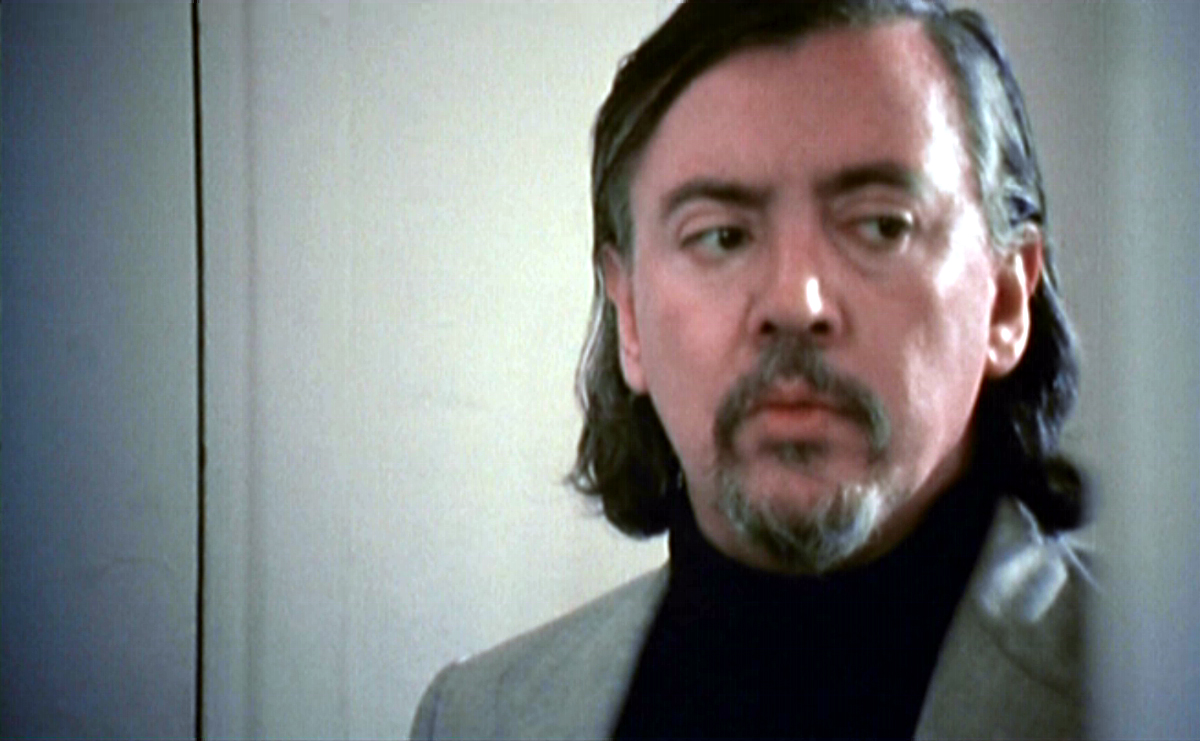
Were you fond of Godard’s Alphaville? Your film Cartas Boca Arriba showed some similarities…
Of course! Godard’s my favorite director ever. I’ve no problem admitting this. At least, not anymore.
And do you like everything he’s made so far? He has changed a lot since then.
That’s one the reasons I like him so much. I like open-minded, innovative people. His Histoire(s) du Cinema are fucking great, the Holy Bible of cinema.
You frequented the Paris Cinémathèque. Ever met Godard personally?
I did, but not in the Cinémathèque. I frequented the place to watch movies, not to chit-chat with anybody. Back then, there were the Capulade and the Café de Fleur, two cafés frequented by misfits and dissidents; that’s where I met not only Godard, whom I consider the most important director of his generation, but also [Jean-Pierre] Melville, another very inventive man, along with some less significant guys. But, do you know that the first thing Silberman asked me to shoot was a film to be signed by Max Ophüls’s son, Marcel? That cunning motherfucker knew Marcel was still very unskilled and expected me to make it for him, anonymously. ‘Bollocks to that!’, I told him. I was a beginner myself but I wasn’t going to do such a thing, no way. That film ended up being Peau de Banane [aka Banana Peel], with Jean-Paul Belmondo and Jeanne Moreau.
I recently read an old interview where Truffaut spoke wonders about Berlanga, but said nothing good about Bardem.
Sure, Truffaut was politically correct, highly literate and progressive ideas but was not a man of the left, was half … half baked or something. I always liked a lot more Godard. People use to stick them all in one basket but they had nothing to do with each other, either ideologically or cinematically.
Those were pretty intense times for you. From France you came back to Spain to work with Orson Welles, no less…
Yes. I’ve always been on good terms with many great people [laughs]. But, as I’ve said lots of times before and I’ll keep saying in the future, it’s Juan Antonio Bardem the one I owe the most. He gave me a job as his assistant back when I was a nobody. I didn’t even have a permit to work, any shit like that. I think Juan Antonio liked me so much, above all, for political reasons. I was a Marxist, something that opened some doors for me and, of course, closed some others: there was no way the right-wing could stomach me.
That’s when you began being known as a famous iconoclast.
No, that’s when I began to be famous. Full stop. But, frankly, I prefer to be seen as an iconoclast than as a henchman of the regime.
Starting with your film Necronomicon, in 1968 you moved forward in your directorial style toward sheer abstraction. Were you possibly a bit fed up of orthodox cinema?
I never wanted to do orthodox cinema, but was either that or staying at home doing nothing. Initially Necronomicon was going to be a simpler thing than what it ended up being, but the Spanish censors read and reproved the script. Censorship was fucking inflexible back then. Those morons! “… there’s a problem with page 7, you’re not allowed to shoot the scene crossed out in red”… That shit. The German coproducer then suggested that I work on the film just with him and I said, yes, let’s go ahead. He gave me total freedom to do whatever I wanted within the confines of the story, and that meant mental liberation for me.
Actually, We Are 18 Years Old is a less spoken about movie but it’s structure was very modern for the times.
I think it still is. And you haven’t seen it in it’s entirety.
No?
No, you’ve seen a chopped off version. The original was 10 minutes longer and has never been shown. The justification of the character of the fugitive, Luis Pena, was cut. With the cuts they gave me he looks like a gangster and a bastard, and he was not. The guy asked the girls for help in good manners, because he has escaped from prison, and they face the dilemma of not knowing what to do. All three did very well. There they put scissors, and also the relationship between the angelic boyfriend of one of the girls, the youngest. And they also cut the final scene, which was more explicit, much clearer to the public.
It’s amazing how that film summarizes nearly everything you’ve done. A 50 year career compressed into one movie: resolutive women, acid sense of humour, film noir, monsters, psychological drama, cartoonish characters…
Yeah, absolutely. It’s a trailer of my whole career [laughs].
I suppose this wasn’t planned at all…
Of course not, but those were the things I had in my head since I was 10. I’ve never shared the idea that movies must tell the story of two people who meet, that they’re young, or old, have a house someplace, or have fallen out with their auntie or whoever… No; I’ve always refused that any of my movies will be like that. Actually, not one of them, and I’ve made more than 200, deals with such subjects. Back then all films were like that, and the public were puzzled by the fact that mine were not. Definitely not.
It had to hurt a lot of box office disaster that was TENEMOS 18 AÑOS …
Rather than box-office flop I was hurt because of the doublecross against me. If the movie wasn’t qualified as second B, which prevented the normal local premiere, it would have worked normally, the proof is that when I made the next, Labios rojos, that did not occur. I made Labios rojos as fast as I could because I was convinced that if a second film doesn’t work well, things would go much harder for me. And it had a mediocre reception but it was fine, because this time I hadn’t the entire board of bastards against me. The only one who defended me was Jose Luis Dibildos, which was my friend and liked the movie, he defended it as he could, but all the ministerial establishment was ready to fuck me, so it was helpless.
You’ve had to go through utter shit since day one thanks producers, censors, politicians… you name it. But, did you think anytime of calling it a day?
Quit cinema? Fuck no! Never. I’ve been in trouble plenty of times with motherfuckers of all sorts, but the fighting and the arguing just spurred me on to keep working. This ain’t an easy world, the struggle is continuous, but I’m a fighter and never accepted shit from anyone. The proof is that none of my 200 plus films have been made with funds from the Ministry of Culture nor any other governmental organization. No one else in Spain can say the same. So what happens? Well, not applying for a subvention allows me to tell them to fuck off when this or that person says they don’t like what I do. Look, I don’t consider myself a genius. I know I’ve made some so-so movies. But I always made them the way I wanted to.
This ethos of yours, obviously came with some consequences.
Yes. I had no choice but to leave Spain, something I never regretted. I wasn’t allowed to do my job. There were two films I was trying to do; years later I finally had the chance to make one of them, Obscene Mirror, but the truth is that it was much more virulent and cabrona back when I first planned it. And I fought tooth and nails for the other, Los Colgados, which was never made. They didn’t allow me to. It was based on a novel by a writer named Bruno Traven, which I liked for his harsh, uncompromising style; my french coproducer, who was pretty useless most of the time, had obtained the legal permission to turn it into a movie, but it was a trap from the very beginning. The Ministry didn’t say no at first, they just treated me paternalistically like I was a dumb kid. “Are you really willing to get yourself into this mess?”, shit like that. But in the end it was approved. I had the French and a Spanish coproducers, a cast already assembled… Everything seemed to be on the right track. Then, few days before start shooting, as scheduled, I received an official notification telling me, in general terms, to stick the movie up my arse. The powers that be decided to forbid it. Out of sheer anger, I decided to make another movie right away, one that wouldn’t bother those sonofabitches. “A vampire flick”, as I told the producers. I took them along to see [Terence Fisher’s] The Brides Of Dracula, they loved it, and that’s how I made Gritos En La Noche.
Which was a big success.
Big as fuck. An awesome success. From then on I was only asked to make horror movies. That’s why I say that not being allowed to film Los Colgados ultimately determined the rest of my career.
But why have you never retaken the film?
Because my aim is to make it as it is. It’s a great, harsh story, one of Traven’s most virulent. I’m adamant to make it regardless of my age. But ask any director, they’ll all tell you about the many films they have in the closet, waiting. On a certain occasion Buñuel told me that the unexpected success of El Fantasma De La Libertad brought him the chance to work on 4 or 5 movies he had written years before and nobody ever backed him to make. It’s absolutely necessary never to give up.
It’s a question of knowing how to get around the producers, isn’t it?
No, no. Producers don’t know shit about nothing. They’re fucking clueless and really don’t care.
Who do you consider the most professional and capable you’ve ever worked with?
Samuel Arkoff and Roger Corman’s team. Definitely. Those were people who really knew about cinema, how to sort out problems, see the potential of a proposed new project and give you enough space to work. Corman helped me immeasurably when I was making Venus In Furs and Justine de Sade, two films with high production values; both rank among the most expensive I’ve ever made. I struck up a good friendship with one of his assistants, Steve Previn, production manager and brother of [composer] André Previn. Steve was a really cool guy and gave me a hand plenty of times. Corman aside, the best producer I’ve ever had was Artur Brauner, whom I worked with on Vampyros Lesbos, She Killed In Ecstasy and many others. [Jess puts out his cigarette, which he has barely smoked, and fires up a new one; I’m off guard and Jess shoots out a question of his own.] Have you seen my latest movie, La Cripta De Las Mujeres Malditas?
Yes. I saw it in Paris, during the retrospective on your career held last year by the Cinémathèque.
And what’s your take?
Very radical…
You mean it in a pejorative, or positive sense?
For me, it was an experiment in anti-cinema. The film charges against all the usual cinematic elements: script, photography, lightning…
That’s right. Fuck it all to hell.
And there are some mirrors set up to show that no filming crew is present. Not even you; like as if the film was being made spontaneously by its actual characters.
Aha, the same principle as in Sex Is Crazy, in which you can perfectly see the director reflected in the mirrors. That was tongue-in-cheek, while in this new movie is done very seriously, taking it to the extreme. It makes me happy you’ve understood my movie so well; most people don’t, because it revolves around a pretty complex idea. Another movie of mine I think you would like is Vampire Junction. And my next one, which I’ll make within five minutes or two months, I don’t know. Not later than two months, though. I want to go over the top with it.
Even more than with La Cripta…?
Much more! It’s about an erotic showgirl whose act is her making love to herself. Gradually she begins to fall in love with herself, gets jealous and eventually commits murder. On herself. Ain’t it cool? I want to count with Fata Morgana and Carmes Montes to make it, though it’s gonna be difficult ‘cos they’ve fallen out with each other. I really like Fata Morgana; in some scenes she’s as compelling as Soledad Miranda.
You’ve always had a knack for finding and directing actresses. Soledad, Lina Romay, Fata Morgana…
Yes, just like George Cukor [laughs]. That’s because I love women passionately. They’re smarter, braver and more sensitive than us men. We are all a bunch of chickens and assholes. Lina and I started up together 30-something years ago and our life together has always been great.
Tell me your favourites
Soledad, Lina, Fata Morgana and perhaps Diana Lorys, who was superb in Nightmares Come At Night.
Let’s talk a bit about the Marquis de Sade.
I discovered his works back when I was a child. His books were forbidden but on sale at the second-hand bookstores in San Bernardo St.
Along the years you’ve adapted Sade’s stories on several occasions. What did you find so attractive? I don’t think it is sex.
Sex is for me the less interesting part; furthermore, he treated sex in a not-that-serious way. Sure, Sade would laugh his ass out if he could hear what people think about him. No, I loved the writing itself, that was much like [Octave] Mirbau’s. His was a literature that was somehow excessive but also sharp and gutsy. The man was a genius. From among the films I’ve made based on one of his stories, my favorite one is Eugenie de Franval, with Soledad Miranda. The film depicts a very authentic and “sadian” relationship, and both Soledad and Paul Muller are splendid in their roles.
And what’s you take on the adaptations made by others? Pasolini’s Saló, for example.
Utter crap. I loath Pasolini. There’s some good moments here and there, but the general context of the movie… Screw it. And Cy Enfield’s [De Sade]… What a pile of shit! I nearly finished it myself. I was asked to, but the project lacked any consistency from the very beginning. Quite strange, because Enfield was a good director; Zulu, for example, is a movie that I like. In my opinion, the only director who really got anywhere close was Klaus Kinski. Paganini which was an irregular and crazy film but had many superb things.
You always got along well with each other.
He was a truly brilliant guy! Very intelligent and with a great sense of humor. The problem was that people usually got off on the wrong foot with him. Those poor little Italian producers thought he was an asshole because on this or that occasion he fucked them up forcing them to stop halfway through the shooting of a movie. As an actor he wasn’t always at his best, but he could be fabulous when he felt like it. Remember my adaptation of Justine? You cannot do it better than Klaus.
And what about that group of left-wing, intellectual erotic filmmakers of the era like José Benazeraf, Alain Robbe-Grillet…?
Come on, man! Don’t put them in the same box! Benazeraf was what the French call a marchand de soupe, a fraud. He was technically capable but had no real talent. Robbe-Grillet, on the other hand, was pretty smart and a very, very good writer.
In your films there are things that sometimes recall Robbe-Grillet’s.
I think so too. I’ve never tried to deny or get rid of the influences I received from different authors. Why should I? All great writers in history took from others. Shakespeare did. But that’s not theft, it’s influence, and if there’s something of your own you can add, that’s the icing on the cake.
The main difference is in that Robbe-Grillet’s cinema was intellectual and pedantic but with a popular touch, while you make popular cinema with occasional intellectual or pedantic touches.
Well… I don’t think my films are pedantic. But I’m certain that plenty of things have been said about me, but never that I’m a bonehead. I think that’s evident. People can like or dislike my cinema, that depends on their tastes; but there’s no stupidities in it. I’m gonna tell you a secret… I have some bloody great music by Friedrich Gulda to use in a film. He was the composer of the title music of Necronomicón, an absolutely wonderful pianist from Vienna who sadly passed away some years ago. Before he died he sent me a letter giving me the rights on some pieces of his music from the era on which he played the piano and conducted a weird symphonic jazz orchestra. I want to use part of this music in the film I was referring you about; a concertino in four parts. Wanna hear it?
Yeah, sure.
Linita! Could you play the Gulda? [Lina Romay shows up and starts searching through a huge pile of CD’s loosely resting on some shelves; eventually she gives up, accuses Franco of being messy and leaves the room]. I also have an hour of music by Iron Maiden to use. They offered it to me when we met in London.
Whoa. How the heck did you met Iron Maiden?
[Laughs] Isn’t it great? It was by sheer chance. Back then they were living in the outskirts of London. I got to know them through Derek Parsons, a wonderful film editor I worked with in my Count Dracula. We all got along very well. We talked a lot about music and, finally, they said that if I wanted to use that stuff of them, I was free to do it. Well, to be precise they gave away their songs to [producer] Tomás Lesoeur, initially for a planned remake of The Awful Dr. Orloff.
By the way, I want to ask about the music library you used in the 70’s especially on labels like Musique Pour L’Image, and composers such as Daniel Janin, Jean-Bernard Raiteux, Jean Claude Pierric … how that worked?
It was music that I knew before, not that it was looking for a tent like to Benichou, who knew him as a guitarist as well.
Hey, what a voluminous script you have there: El Hombre Que No Estuvo Allí. What is it about?
What is it about? It’s an abstraction, like Necronomicon. What was Necronomicon about? Lina and I finished this not long ago, still haven’t shown it to anyone. It won’t be an expensive film to do. For this type of productions I have an American producer, Kevin Collins, and a French one, Lesoeur. This script is among my weirdests, in the vein of Sex Is Crazy; I think Kevin will like it more than Lesoeur, who’s a bit of a more primitive person.
I’ve read some of your scripts, such as the El Castillo Rojo and A través del espejo, which reads more than like a novel.
El Castillo Rojo was never finished. I started to shoot at the end of another movie but never could finish it. Partly was shot in a residential area of Calpe by Ricardo Boffil, a fucking great site. I played there the villain. And screenwriting as a novel is something I often do. Nobody has to tell me how I should write a screenplay, that pisses me off.
How much time do you usually spend writing a script? And how much do you like the process of writing?
It depends. This one, I made it in two months. Writing is something I really enjoy, but actually there’s no process in cinema I don’t like. This includes editing, which is essential work and maybe the hardest. I learnt a lot about editing from Orson Welles, a master in the matter who could perfectly spend three full years editing a film, changing this and that, never happy with the results. I used to be with him in the editing room, watching him work and picking up bits and pieces of film from the floor. That motherfucker was incredibly good: three days after having a sequence finished, perfect in my opinion, he would show it to me again rearranged to even better results. Orson said that movies are ductile. That’s perfectly legit to stretch, cut, shrink the celluloid, to play with that physical item that is a piece of film.
Many of your movies show a clear influence of Welles, regarding lightning and framing.
His was a classic expressionist lightning, nothing new. Watch Campanadas A Medianoche [aka Chimes At Midnight], that’s enough proof. Do you know that there are only incandescent lights on that movie? No more than some voltaic arches and screens. That’s what gives the film a lightning so special.
In the El Hundimiento de la Casa Usher you did that kind of light.
Exactly, expressionist lighting. Also I got there I as an operator, and worked like a bastard, but overall the photo of my films is almost all mine.
Now, thanks to DVD’s, we can really appreciate the photography of many your films.
In the past I’ve been treated very badly by the goddamn Spanish laboratories, the worst in the world. It didn’t matter how good the original photography was, ‘cos they would ruin it anyway. Not being the owner of the negatives, I’ve been fucked up by the labs plenty of times. But, yeah, that’s right, DVD’s are great. Have you seen the latest remastered version of M, by Fritz Lang? It’s 100 times better than the version we knew. The lightning, the direction, the cast… Amazing. And [Coppola’s] The Conversation. I saw it again on DVD and still is a superb film.
And the nowadays cinema, what do you see that you liked?
I really like the French, as Pitof, a mad genius. And I see many TV series, such as Jerry Bruckheimer’s, which are all great.
What do you think of Michael Bay?
He is a modern Cecil B. DeMille, with awesome special effects and everything, but little interesting guts for me. I also like Tarantino, not Robert Rodriguez, who is nearly as good. Lynch is a director who I like sometimes but think he’s very uneven. Sometimes he has awesome findings, sometimes goes like cheap. The same with Tinto Brass, at first I was interested, but he went useless.
I’m going to ask you for some lost titles or at least surrounded by some confusion. Lascivia, does it exist?
Yes, it was finished.
Sida, La Peste Del Siglo XX?
We run out of money. Never finished.
Explain me all that mess with El Hombre que Mató a Menguele and Gente del Río…
I started to make a movie called River People (Gente del Río), in which a retired Mengele appeared, played by a great Howard Vernon. But the producer wanted to give more importance to the character of Mengele, but in the fashion of a tacky Andrea Bianchi’s action flick. But I didn’t want to ruin character, which is a sinister and sordid guy, you have to give him another treatment, not like the bitch in the corner. So I eventually quit the project. Gente del Rio was a film about fishermen who live in a village in Central America and know that Mengele is living there but no one dares to approach him. Then a group of fishermen try to hunt him. And the film is the struggle to get that bastard killed. And they succeed. It was based on people I met in Brazil, former Nazis living like gods in some big villas, and I wanted to show the clash between those nazis and the humble people of the river. But I didn’t finish it, because it wasn’t good enough and I didn’t want that film to show up somewhere on video. Almost all the material I did with the Italians went that way, they fucked with me a thousand times, everything went wrong and that’s why I’ve never admitted that as my work.
That was the same case as Justine Lady Lujuria, the Joe D’Amato recut?
No, but D’Amato, as far as it goes, was a professional guy and very nice person. But this film was made at the time of the Carnation Revolution in Portugal. But then when I did the first cut I wasn’t satisfied so I quit. Lina was terrific, but the movie was very poorly managed.
Has anything changed for you after receiving the Spanish Academy’s honorific Goya award? Are you having more job offers now?
I’ve never had offers from anybody. Nothing has changed, it never does. This is the way it always has been. I do what I do, at my own expenses and risks. If someone likes it, fine; if not, I don’t give a shit.
____________
23 of Jess Franco’s 206 films
____________
The Awful Dr. Orlof (1962)
‘Take a bit of “Les Yeux Sans Visage”, stir in a dollop of Jack the Ripper-style stalking, and let Spanish director Jess [Jesus] Franco stir vigorously–and you have our tale: Orloff, demented doctor extraordinaire, will stop at nothing to get the necessary skin grafts to restore his horribly disfigured daughter’s ravaged face. To that end, he employs his blind zombie henchman, Morpho, who wields a mean (if somewhat haphazard) scalpel himself to fetch fetching lasses. One of ’em, however, is engaged to the intrepid police Inspector investigating all those murders. Oopsie.’ — MargaliMorwentari
the entirety
____________
The Mistresses of Dr. Jekyll (1964)
‘The follow-up to Jess Franco’s career-launching film The Awful Dr. Orloff, Dr. Orloff’s Monster is a modern gothic thriller, injected with moments of perverse eroticism, science fiction, and smoky jazz. When Melissa (Agnés Spaak) returns to her ancestral home to claim her inheritance, she finds that the castle is filled with strange characters and dark secrets. Governing the crumbling manor is a diabolical scientist, Dr. Conrad Jekyll (Marcelo Arroita-Jáuregui), who uses high-frequency mind control to command an undead henchman (Hugo Blanco) to perform a series of vicious murders. When a dry-witted detective (Pastor Serrador) and Melissa’s suitor (Pepe Rubio) trace the crimes back to Jekyll’s castle, they realize the only way to trap the zombie is to use Melissa as bait.’ — Video Detective
Excerpt
_____________
Marquis de Sade: Justine (1969)
‘I hope you weren’t planning on seeing anything remotely related to the Marquis de Sade’s great work “Justine” in this film. This is practically a completely different story, the most this movie should say is that it’s inspired by “Justine” not that it IS “Justine”. This most certainly is not “Justine”. If you want to see “Justine” go pick up the French film “Justine de Sade” that is far more faithful to the original story. This “Justine” by Franco is a very artistic version and they take a lot of artistic license, to the point where they completely change the ending and have a “happily ever after” version. I think Sade would consider this an insult.’ — Gradient Vector Field
the entirety
____________
Venus in Furs (1969)
‘A musician finds the corpse of a beautiful woman on the beach. The woman returns from the dead to take revenge on the group of wealthy sadists responsible for her death.’ — Letterboxd
Excerpt
____________
Eugenie (1969)
‘Eugenie, an innocent young woman, is taken to an island paradise where she initiated into a world of pleasure and pain controlled by the sinister Dolmance. But when she surrenders to her own forbidden fantasies, Eugenie becomes trapped in a frenzy of drugs, sadomasochism and murder. Can a frightened girl in the grip of carnal perversion find sanctuary in the orgies of the depraved?’ — Letterboxd
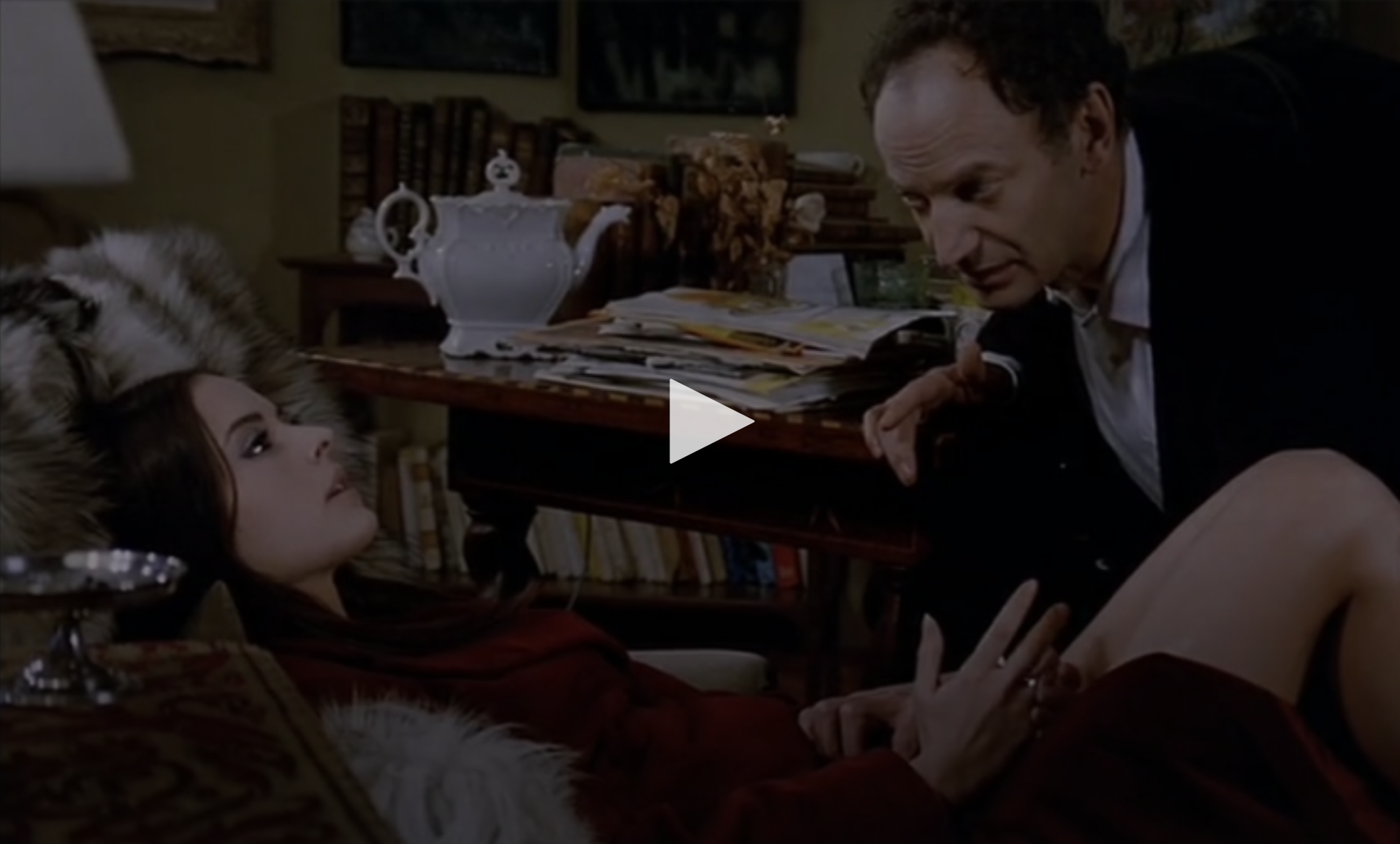
____________
Count Dracula (1970)
‘A Spanish/West German/Italian co-production, El Conde Drácula (1970) was filmed in Barcelona, Alicante and Munich with interiors shot at Barcelona’s Estudios Cinematográficos Balcázar. Scripted by Towers under his oft-used pseudonym ‘Peter Welbeck’, it opens, like the novel, with trainee lawyer Jonathan Harker (as played by Munich-born Friedrich Wilhelm ‘Fred Williams’ Löcherer) catching a train to Bistritz from Munich. A fellow passenger (not in the novel) is alarmed to hear who his client is: “Maybe you know him… Count Dracula.” Said fellow passenger’s face remains completely stony throughout this exchange, in time-honoured Jess Franco fashion, so his alarm needs to be communicated via another Franco mainstay; a clumsy zoom-to-close-up. Despite this, the opening is reasonable enough, drenched as it is in psuedo-Eastern European atmosphere, just like its literary source. Although hampered by some unconvincing day-for-night shooting and German Shepherds standing in for wolves, the scene where Dracula’s carriage takes Harker across the mist-shrouded woodland of the Borgo Pass stands as one of the eeriest and best cinematic depictions of this iconic sequence.’ — Rob Talbot
the entirety
_______________
Vampyros Lesbos (1971)
‘Franco’s take on the classic vampire tale. A sizzling psychosexual abstract nightmare that feels like some weirdo erotic symphony of psychedelic blood poetry—going above and beyond to onslaught our full array of senses with style, beauty, and blood red hypnotism.’ — Ian West
Trailer
____________
Dracula, Prisoner of Frankenstein (1972)
‘Dracula kills another innocent victim and Dr. Seward decides it’s time to wipe him off the face of the earth. Armed with a hammer and a wooden stake, he arrives at Castle Dracula and duly dispatches the vampire Count. Next day, however, Dr. Frankenstein arrives with his assistant, Morpho, and a large crate containing the monster. Using the blood of a pub singer who has been abducted by his creation, the doctor brings Dracula back to life and uses him for his own ends. The Count and a female vampire continue to terrorise the town, so Dr Seward once again sets out for Castle Dracula. Unfortunately, he is attacked by the Frankenstein monster and left for dead. Amira, a gypsy, rescues him and summons up a werewolf to do battle with the forces of evil.’ — IMDb
the entirety
______________
Dracula’s Daughter (1972)
‘It gets off to an interesting start – a dying woman uses her last breath to tell her granddaughter about her vampire heritage and family links to a big castle on a hill. I was kind of looking forward to how this would turn out, but then the film takes a few left turns and the base plot is left somewhere in the background as we get treated to a lesbian love story and a bizarre murder plot that pretty much comes out of nowhere and doesn’t go anywhere. On the plus side, we do get beautiful women, some lovely European locations and a nice jazz score that somewhat make up for the clunky plotting. There’s also Howard Vernon as a campy Hammer style Dracula type character – though it’s disappointing that he never actually gets out of his coffin. Dracula’s Daughter is not a total dead loss, but it’s not a classic either. I reckon this is one of those Franco movies that was made at the same time as a lot of other films and then got chopped together in the editing studio.’ –Slig001
the entirety
_____________
The Demons (1973)
‘One of the more perplexing films in the Jess Franco filmography for many years was his French production, Les demons (The Demons), which not only picks up on elements of his previous The Bloody Judge (itself a riff on Witchfinder General) but draws a little inspiration from Ken Russell’s infamous The Devils (though only a sliver) and drive-in staple Mark of the Devil. However, the film wound up being released in a baffling multitude of different edits, some clocking in under 80 minutes with over a third of the two-hour film hacked away. On top of that many encountered it on VHS where its careful, very expansive scope compositions were diced to pieces, making it impossible to enjoy on any level apart from its distinctive and sometimes psychedelic score by “Jean-Bernard Raiteux”.’ — Mondo-Digital
Excerpt
______________
The Erotic Rites of Frankenstein (1972)
‘According to some estimates, The Erotic Rites Of Frankenstein was one of a dozen movies that Franco worked on in 1972—not all of which were ever completed—and over the course of its tight 74 minutes, nearly every scene features something shocking, sexy, or otherwise attention-grabbing. Putting the word “erotic” in the title is a bit of a stretch, since eroticism requires some element of desire, which is hard to discern amid The Erotic Rites Of Frankenstein’s somber, costumed secret societies and robotic sadomasochism. The movie is mostly a muddle, governed by dream-logic. But at least Franco doesn’t spare the sensation.’ — Noel Murray
Excerpts
_____________
A Virgin Among The Living Dead (1973)
‘Haunting talismanic odes to the tired, the lost and the lonely. Hazed incoherence as grief distorts the horizon line both ahead and behind, making it impossible to let go. The ghost of Soledad omnipresent in her invisibility. An enigma now forever set in amber. A disjointed minimalist funeral dirge as the procession ambles onward past phallic objects and scattered distant memories that no longer feel like memories, but obtuse explanations. Black magic rites and the taste of body and blood. Sheer underwear and floaty silk nightgowns. Reality and unreality undescipherable from one another as they walk hand in hand through the trees toward the comfort of the marsh.’ — ELECTRICWIZARDx
the entirety
_______________
Lorna the Exorcist (1974)
‘”Lorna the Exorcist” features wall-to-wall style, typical of director Jess Franco. Swanky casinos, nightclubs and beautiful homes and fashions, combined with a sultry and bizarre jazz score. And bizarre this film is; weird, even by Franco standards. It is never really explained why Lorna wears the crazy green eyeshadow halfway up her forehead; but the story is good, and there are some nice twists and surprises. The sex is extremely graphic here, bordering on hardcore. if you want to see ALL of Lina Romay, this is the one to seek out. I think the film would have been a bit better without the open clitoris scenes, as those elements take the viewer a bit out of the story, as things are put on hold for close-up vaginal shots. They are sexy, but unnecessary in a film that is good enough to maintain interest without them.’ — Falconeer
Excerpt
_____________
Exorcism (1974)
‘A gleefully sordid grindhouse gem punctuated with disarming moments of visual eloquence, EXORCISM is a quintessential Jess Franco film that takes the director’s idiosyncratic sexual obsessions and folds them within the trappings of the conventional horror film. Made during the height of the demon possession film craze, EXORCISM stars Franco’s wife and muse, the incomparable Lina Romay, as a performance artist who stages faux satanic rituals for the gratification of the Parisian elite. When a defrocked priest with a penchant for S&M (Franco) witnesses one of Anna’s erotic spectacles and mistakes it for an actual black mass, the moral crusader launches a one-man Inquisition upon the sexually liberated women of Paris.’ — kinolorber
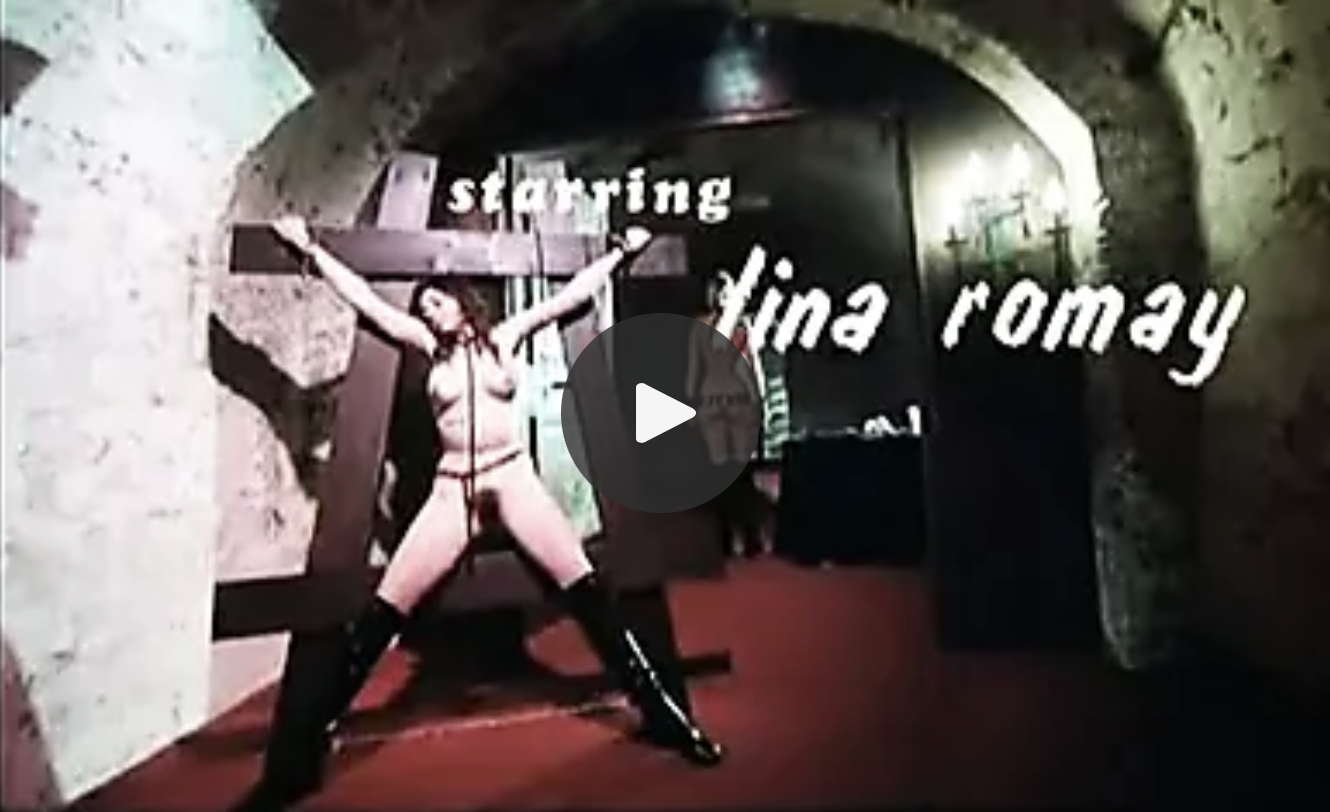
____________
Jack The Ripper (1976)
‘The inimitable Klaus Kinski (NOSFERATU THE VAMPYRE, CRAWLSPACE, FITZCARRALDO) assumes the role of the most heinous criminal of modern history – JACK THE RIPPER – in this explicitly savage, wildly erotic version of the infamous tale from Europe’s most notorious filmmaker, Jess Franco. Kinski stars as a sympathetic doctor by day who, when night falls, sheds his skin and stalks the shadowy streets of London as the prostitute-murdering Jack the Ripper. While Scotland Yard races to stop his bloody reign of terror, a young woman launches her own investigation and becomes the Ripper’s next target. Think you’ve seen JACK THE RIPPER? Think again…’ — Full Moon Features
Trailer
_______________
The White Cannibal Queen (1980)
‘One of the more unusual entries in the still prolific Jess Franco’s filmography, Cannibals (equally well known under the alternate titles of White Cannibal Queen and Mondo Cannibal) is a pretty stupid film. It’s not good. That’s not to say it isn’t entertaining, because in many ways it is quite an enjoyable trash movie but it is poorly made, poorly acted, and the effects, costumes and make up border on the retarded.’ — Ian Jane
the entirety
______________
Mansion of the Living Dead (1982)
‘Jesus Franco describes this movie as a freeform meditation on themes drawn from the work of poet and novelist Gustavo Adolfo Bécquer. Bécquer isn’t an author I’ve read, and I know almost nothing about him beyond that he lived during the 19th century and that he’s greatly respected in his native Spain— the kind of writer whom you can’t escape from the Spanish school system without encountering at least once. My ignorance of Bécquer and his writing means that I can’t confidently guess what Franco might have had in mind by linking him to Mansion of the Living Dead. Just the same, though, I also can’t shake the suspicion that he was having us on at least a little, because for a film supposedly rooted in the classics of 19th-century literature, Mansion of the Living Dead sure does look like a shitty rip-off of Tombs of the Blind Dead and its sequels. I mean, I guess it can be both— and if anybody was going to pull a stunt that ridiculous, Jesus Franco would be the one. Even if it’s true, though, I’m not sure the highbrow connection adds much to the sometimes hilarious, often excruciating, and always baffling experience of watching this film.’ — 1000 misspent hours
Trailer
______________
Oasis of the Zombies (1982)
‘In a remote desert oasis, a fortune in gold was hidden by the Nazis during World War 2. 50 years later, a bunch of fortune-hunters converge on that selfsame oasis. Imagine their discomfiture upon discovering that the gold is being guarded by an army of zombies.’ — Letterboxd
the entirety
_______________
Revenge in the House of Usher (1982)
‘It is comprised mainly of footage from three separate Franco films, including Franco’s initial take at the Poe source material (which is dated 1982). That film is said to be “an extremely loose” adaptation to begin with, though conceived with an apparent gothic and literary dignity. Per the altered titles that have been associated with this version- “Revenge of the House of Usher” and “Revenge in the House of Usher”- the adherence to the source material has seemingly only loosened all the more as the alterations piled up. (For the record, the second source of footage pillaged for this fatally mishmashed project is said to be called The Crimes of Usher, though that fact is muddled by an abundance of alternate titles, release dates, and subsequent video releases surrounding this whole of this mess). (Good lord, even the film’s backstory is taxing).’ — Jim Tudor
Trailer
______________
Angel of Death (1985)
‘A Jewish commando unit hunting Nazi war criminals tracks down the infamous Dr. Mengele in the jungle, and find that he is torturing nubile young virgins and performing horrible medical experiments on the locals. They prepare to battle their way past Mengele’s hordes of fanatic Nazi bodyguards in order to get to him.’ — Ulf Kjell Gür
the entirety
_____________
Killer Barbies (1996)
‘While driving on tour late night through a lonely road in the countryside of Spain, the van of the punk band “Killer Barbies” has an accident and breaks down. A creepy old man invites the group to spend the night in the castle of Countess Von Fledermaus and presents himself as her secretary Arkan. Arkan explains that the mechanic is located 62 km far from the location and he tells that the Countess loves youths. Flavia, Rafa and Mario accept the invitation but Billy and Sharon stay shagging in the van. When the musicians meet the Countess, they find that she is the ancient artist Olga Luchan and they question how she could keep so young. But sooner they discover that the Countess needs blood of young people to keep her beauty.’ — Claudio Carvalho
Trailer
____________
A Bad Day at the Cemetery (2008)
‘An epic home made movie by Jess Franco. It was only shown at the Cinematheque Francaise, Paris in 2008 . Four years later the movie was recut and extended with some scenes by Jess Franco and his new producer, splittet in two parts and re-released as “Crypt of the Condemned” Part I and Part II.’ — Letterboxd
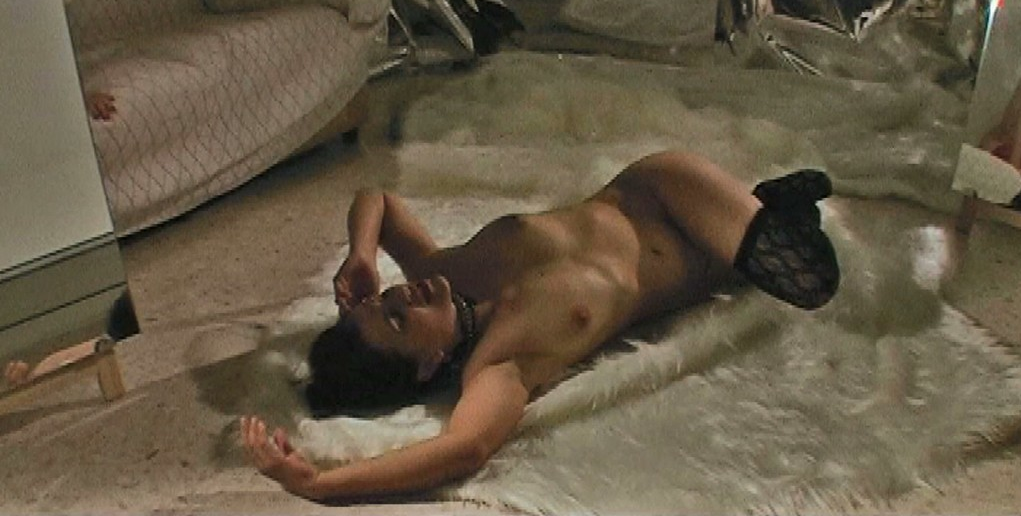
_____________
Revenge of the Alligator Ladies (2013)
‘Jess Franco, in his final film as director, plays himself who is trying to get a movie in the can but is running into a variety of issues. The film’s subject, Al Pereira (Antonio Mayans) soon finds himself in Germany where he ends up in a mystery while trying to find an actress who has previously worked with the director. REVENGE OF THE ALLIGATOR LADIES ended up being Franco’s final film, although it was finished after his death by Mayans who also directed the scenes in Germany.’ — Michael Elliott
Trailer
*
p.s. Hey. ** Dominik, Hi!!! Yes, I just started reading the issue, and it’s way awesome so far. You’re the best! Thanks to your love for those tix. I need to get out and see a new film. I did read that that new Pinocchio is truly awful, but as long as it’s truly awful, I’m in. Love upping your survival instincts to maximum wattage and effectiveness for the weekend’s duration and making sure there’s any least one really cute, fascinating other guest who gravitates to you, G. ** Misanthrope, I never thought about sweat vs. earphones, but then I’ve never been to a gym. Yeah, no, if someone’s your friend and gets waylaid, that’s different, of course. At least up to the point where you’re just banging your head against a veritable wall and they could give a shit about you and your help. I saw Kayla in NYC not to, too long ago, and I remember she still looks like a high quality teen. Not bad: your weekend. I don’t know Longhorn restaurants, but the name makes me think I’d be lucky to order some meatless fries there. Have the funnest fun. ** _Black_Acrylic, Awesome about seeing your friend. Amazing that even seeing a friend becomes a rare treat. We gotta get you out of there, maestro, and it sounds like that’s finallyclose. Your patience is highly admirable. ** NIT, Hi, NIT. Wait, you’re Steven! Hey, man, so great to see you! Thanks for coming in and talking to T. How are you? What’s going on? What are you working on. Etc, etc. Whoop! xo, me. ** T, Hi, T. Thank you and you! A bunch of friends and folks on social media hit me up to say how great your post was. Bunch of smarty pants like us. Wait, food doesn’t get tastier thanks to a microwave?! I microwave everything. Oh my god. I hope your weekend was putty in the hands of a ***** chef. ** Steve Erickson, I haven’t seen ‘Rise and Fall …’. I will. I think that, this being France and Paris in particular, there will Godard galore to get to see now. I’m ‘praying’ that some place shows ‘Adieu au language’ in 3D because I’ve been dying to see that again for years. I’ll check out the lineup for Indieplaza. And I hope you are the ultra-opposite of dizzy, of course. ** Robert, Hi, Robert. True, such a great sentence. Thanks for the link to the Bernhard interview. One can never read too much of his typing and/or vocalising. Scary about the longterm stress effects, Jesus. If Zac and I don’t get our film made soon I may become the Paris Hilton of the experimental writing and blogging set, which actually sounds weirdly interesting if I think about it. A fruitful as hell weekend to you! ** Okay. I’ve never done a Jess Franco post because his body of his films is so gigantic that I was exhausted and daunted even thinking about trying to set up such an enterprise, but Halloween has given me the excuse to just concentrate on his horror and Sadean stuff, which made the task doable, so that’s what I’ve done. See you on Monday.




 Now available in North America
Now available in North America 
Ok, let’s see. My weekend hasn’t been great so far, not really. I was hanging out with friends and had to leave suddenly because my emotions fell out of wack. I needed a drink when I was alone again, but nothing was in the cabinet. Instead, I lay in bed and thought hard about things with no chemical barrier.
I have a difficult friend for whom I was once the sole caretaker—therapist, parent, brother, and friend all wrapped in one. Saying “a friend” is wrong because I’ve been playing that role for many people since I was about 14. The first boy I was really in love with was like that, and it became the blueprint for my subsequent relationships. Anyway, in this most recent case, we don’t talk anymore.
I feel listless now. Basically useless. It was a decision I made for my benefit, yet it’s only brought me misfortune. I’m not confident enough to believe people want me around for anything other than servitude. I’m off-putting, awkward, and at times, too obsessed with odd topics. So if I’m not giving someone everything, the balance of the universe must be askew.
I’m not sure if this comment will go through, so that’s why I’m being as honest as possible, on the off chance it doesn’t. If it does, well, I’m no more than a letter.
I am a definite fan of Jess Franco and have been since my teenage years, when I picked up a copy of the Vampyros Lesbos soundtrack from the basement of a Leeds record shop. That one’s still my favourite of his films and I have seen a bunch. All are pretty good depending on your individual patience and tolerance for his unique style, and there’s no denying the guy had an eye for beauty.
Beyyer Jess Franco than Jmes Franco
Fantastic Franco Post, Dennis! And of course with the eternal Soledad Miranda! Apparently they were making a version of Juliette when she died, and there’s meant to have been 40 minutes of lost footage somewhere.
How’s things…?! Great to see Halloween approaching. I’ve had a pretty good summer. Got the AP Party book all done and ready to go…, and it might actually come out next month… Also, been working on a video/reading thing with Marc for the upcoming Infinity Land event, which I can’t get to, unfortunately. Still haven’t left Japan since I can barely remember when.
Maybe the person (people?) behind worldscinema.org reads this blog, because they dropped several Franco films over the weekend.
I was indeed too dizzy to make it to Indieplaza. I did catch PEARL in the theater. It was much weaker than X, more melodrama than horror film. It feels like a flashback episode of a limited Netflix series.
Jess Franco is new on me and ‘Justine’ was a bloody delight for a Sunday evening. I really like narrators who do really hammy voiceovers over music between each scene. I’ve never read the book, although it’s been on my to-read list for ages upon ages. Thanks Dennis. Hm, I think I’ve been cursed lately by having loads of old, half-eaten etc food lying around the flat that I’ve tried to microwave back to life but to no avail. I wouldn’t go as far to say it was a general rule of nature and food preparation though hahah. Hope your Monday grants you a long velvet cape in a colour of your chosing, with which you can swish around the metro and/or produce various items of contraband at attractive discount, whatever you rather, xT
Dennis, Yes! And David was there in NYC too. And Kayla’s sister and best friend. We went to see THEM. Met up with you around Houston and you took us to that Halloween shop. They loved it and still talk about it.
Seems a couple friends of mine are talking about meeting up in Paris early next year sometime. Hmm. Keeping that on my radar. 😉
I’d have to see about restrictions and all that.
Longhorn is a chain restaurant, and yes, a steakhouse to boot. This suburb I live in, it’s all chain restaurants. This one’s pretty good. And they do have, er, salads…hehehe. Well, fries and onion strips and other things. You could probably find something.
But we had a good time, thanks.
Had a good time at the Arts Fest thing yesterday too. Saw some friends I hadn’t seen in a few months and played wither their kids most of the time, two great little creatures that are hella funny and bright. For some reason, they like me.
I go into the office Monday. Bleh. And I’m a be hella busy. Bleh. But I’ll be around.
Hold down the fort until I get back. 😉 😀